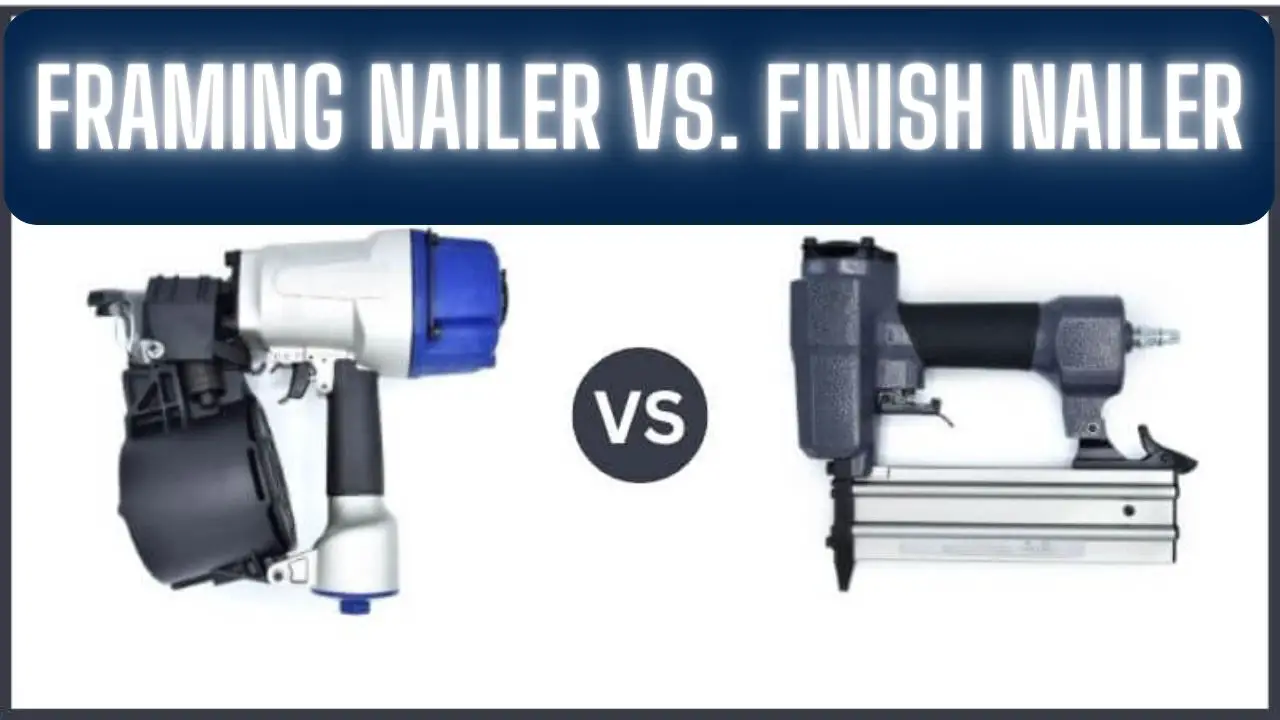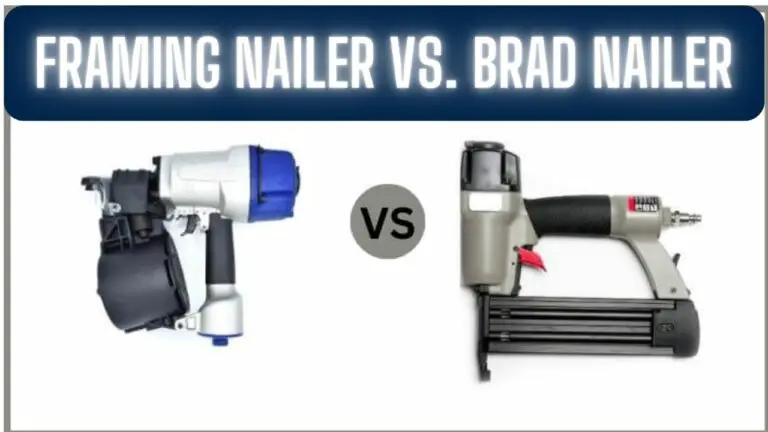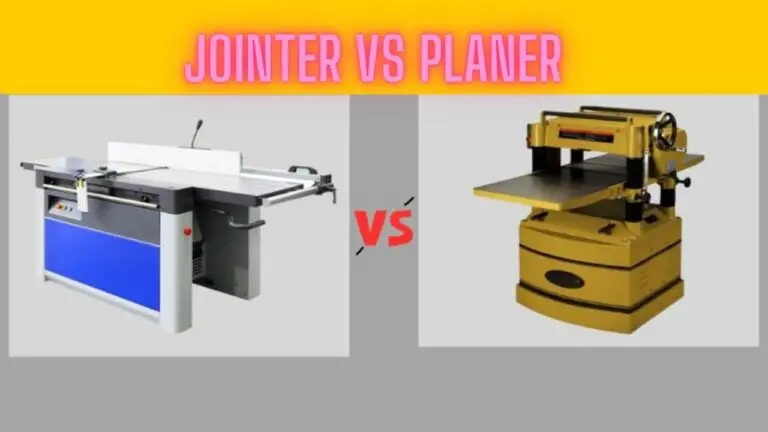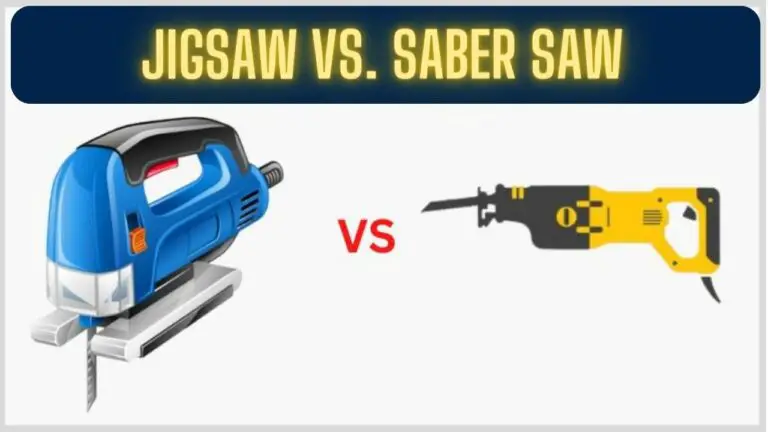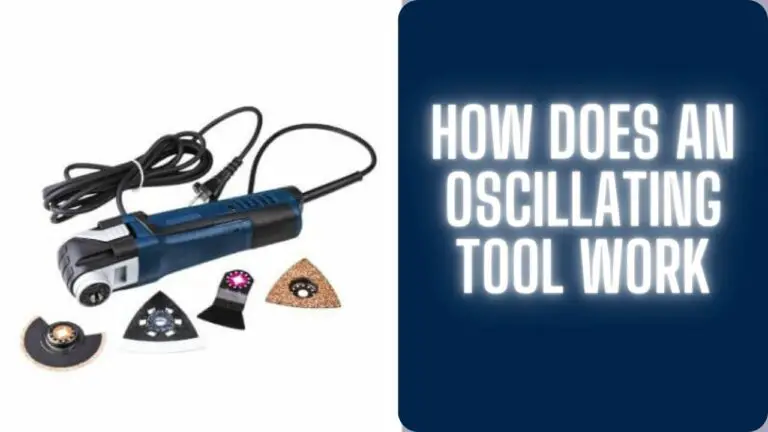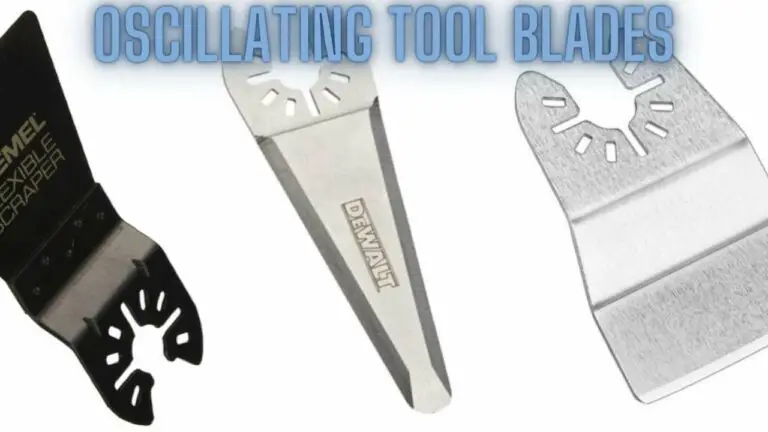Framing Nailer vs. Finish Nailer: Choosing the Right Tool for the Job
Introduction
When it comes to carpentry and woodworking, having the right tools can make all the difference in the quality and efficiency of your work. Two essential tools in a carpenter’s toolkit are the framing nailer and the finish nailer. While they both drive nails into wood, they serve different purposes and are designed for distinct tasks. In this article, we’ll explore the differences between framing nailers and finish nailers to help you choose the right tool for your project.
Framing Nailer:
Purpose: A framing nailer, as the name suggests, is primarily used for framing and structural work. It is designed to handle heavy-duty tasks that involve joining larger pieces of lumber, such as building walls, roofs, and floors.
Key Features:
- Nail Size: Framing nailers use larger, heavier nails (usually between 2 to 3½ inches in length) that have a thick shank and a clipped head. These nails provide strong holding power, crucial for structural integrity.
- Nail Angle: Most framing nailers use a 21-degree, 28-degree, or 30-degree nail angle. The angle helps in reaching tight spots and corners during framing.
- Magazine Capacity: Framing nailers typically have larger magazines capable of holding 20 to 30 nails. This reduces the frequency of reloading, increasing productivity.
- Depth Adjustment: They often feature depth adjustment settings, allowing you to control how deeply the nails are driven into the wood.
- Weight and Size: Framing nailers are bulkier and heavier compared to finish nailers, which helps them withstand the rigors of framing work.
Framing Nailer Applications
Framing nailers are powerful tools designed for heavy-duty carpentry and construction applications. They are a staple in the toolkit of professionals and DIY enthusiasts alike. Here are some common applications for framing nailers:
- Framing Walls:Framing nailers are named for their primary use: framing. They excel at quickly and securely fastening the structural elements of buildings, including wall studs, headers, sole plates, and top plates. Whether you’re framing a new wall or renovating an existing one, a framing nailer is an essential tool.
- Roofing:Roofing projects often involve attaching roof trusses, rafters, and sheathing. Framing nailers can efficiently drive nails into these heavy-duty materials, ensuring a strong and stable roof structure.
- Deck Construction:Building a deck requires attaching joists, beams, and deck boards. Framing nailers make this process faster and more precise, ensuring that the deck is structurally sound and safe.
- Flooring Installation:When installing subflooring or underlayment, a framing nailer can quickly secure the sheets of plywood or oriented strand board (OSB) to the floor joists.
- Fence Building:Constructing a wooden fence involves connecting fence posts, rails, and pickets. Framing nailers provide a quick and reliable way to assemble fence sections efficiently.
- Pergolas and Gazebos:Building outdoor structures like pergolas and gazebos requires attaching large beams, posts, and headers. A framing nailer can handle these heavy components, ensuring the structure’s stability.
- Sheathing and Siding:Installing sheathing or siding on the exterior of a building is another common application. Framing nailers can secure these materials quickly and securely, helping to weatherproof and insulate the structure.
- Barns and Sheds:Constructing barns, sheds, or other outbuildings involves a lot of framing work. Framing nailers are essential for assembling the structural framework of these structures.
- Remodeling and Renovation:Whether you’re remodeling a room or renovating an entire house, framing nailers are useful for tasks like adding or removing walls, replacing damaged framing members, and modifying structural components.
- Foundation Work:When framing the foundation of a building, such as securing the sill plate to the concrete or masonry, framing nailers are indispensable for a secure and stable foundation structure.
- Woodworking Projects:Framing nailers can be used for large-scale woodworking projects like building custom furniture pieces, wooden storage sheds, and playhouses.
- Custom Home Construction:In custom home construction, where unique and complex designs are common, framing nailers are crucial for assembling custom-made structural elements to match the architectural specifications.
- Prefab Housing and Modular Construction:In the manufacturing of prefab and modular homes, framing nailers are essential tools for quickly and accurately assembling the various components of the structure.
- Concrete Formwork:Framing nailers can be used in conjunction with concrete formwork to help create the shapes and structures needed for poured concrete, such as retaining walls and foundations.
- Demolition:In demolition work, framing nailers can be used to help disassemble structures by quickly removing nails and separating framing members.
Framing nailers come in various sizes and styles, including pneumatic (air-powered) and cordless models, allowing you to choose the one that best suits your specific framing needs. Proper safety precautions, such as wearing appropriate personal protective equipment (PPE) and following manufacturer guidelines, are crucial when using framing nailers for these applications to ensure both safety and quality results.
Framing Nailer Pros and Cons
Framing nailers are essential tools for various construction and carpentry projects, but like any tool, they come with their own set of pros and cons. Understanding these advantages and disadvantages can help you make an informed decision about when and how to use a framing nailer.
Pros of Framing Nailers:
- Speed and Efficiency: Framing nailers are incredibly fast, allowing you to drive nails quickly and consistently. This efficiency speeds up construction projects significantly.
- Strength and Stability: Framing nailers use large, thick nails that provide strong holding power. This results in robust and stable structures, essential for the integrity of buildings and other constructions.
- Reduced Fatigue: Using a framing nailer requires less physical effort than manually hammering nails. This can reduce fatigue during extended periods of use.
- Precision and Consistency: Framing nailers drive nails consistently and with precision, ensuring that nails are evenly spaced and properly seated in the wood.
- Versatility: They are versatile tools that can handle a wide range of framing applications, including wall framing, roof truss assembly, deck construction, and more.
- Increased Productivity: The speed and efficiency of framing nailers result in increased productivity on construction sites, enabling workers to complete projects faster.
- Depth Adjustment: Many framing nailers feature depth adjustment settings, allowing you to control how deeply nails are driven into the wood, ensuring a secure hold without damaging the material.
Cons of Framing Nailers:
- Cost: Framing nailers can be relatively expensive, especially for high-quality models. This initial investment might be a barrier for DIYers or those with limited budgets.
- Weight and Size: Framing nailers tend to be bulkier and heavier than other nailers, which can make them less convenient for overhead work or in tight spaces.
- Noise and Vibration: The operation of framing nailers generates noise and vibration, which can be disruptive and tiring for users. Proper hearing protection is essential.
- Air Compressor Dependency: Pneumatic framing nailers require an air compressor and hoses, adding to the cost and complexity of the tool setup.
- Jamming: Like any mechanical tool, framing nailers can occasionally jam, requiring downtime for clearing the jammed nails.
- Safety Concerns: The power of framing nailers can be dangerous if not used properly. There is a risk of accidentally firing nails into unintended surfaces or body parts, making safety precautions crucial.
- Limited Nail Length: Framing nailers are designed for specific nail lengths, so you may need multiple nailers if you require a range of nail sizes for your projects.
- Environmental Considerations: Pneumatic framing nailers generate air emissions, and the production of nails has environmental impacts. However, these issues can be mitigated by choosing eco-friendly options when available.
Finish Nailer:
Purpose: A finish nailer is designed for more delicate and precise work. It’s used for attaching trim, molding, and other finishing touches to woodworking projects. Finish nailers excel at tasks where aesthetics and minimal surface damage are essential.
Key Features:
- Nail Size: Finish nailers use smaller nails (typically 15 or 16-gauge) that have a slender profile and a small head. These nails leave smaller holes that are easier to conceal.
- Nail Angle: Most finish nailers use a straight, 0-degree nail angle, which allows for precise and flush nailing in tight spaces.
- Magazine Capacity: Finish nailers have smaller magazines, usually holding 100 to 150 nails. This is sufficient for most finishing tasks.
- Depth Adjustment: Like framing nailers, finish nailers also offer depth adjustment features for controlling nail depth.
- Weight and Size: Finish nailers are lighter and more compact than framing nailers, making them easier to maneuver and less tiring during extended use.
Finish Nailer Applications
Finish nailers are versatile power tools that play a crucial role in woodworking and construction projects that demand precision and a polished appearance. These nailers use smaller, thinner nails (typically 15 or 16-gauge) and are designed for applications where the aesthetics of the finished product are essential. Here are some common applications for finish nailers:
- Trim and Molding Installation:Finish nailers are widely used for attaching baseboards, crown molding, door and window casings, chair rails, and other decorative trim elements. They drive nails with small heads that can be easily concealed with putty, resulting in a clean and finished appearance.
- Cabinetry:In cabinetry work, finish nailers are used to assemble cabinet components, attach face frames, install cabinet backs, and secure decorative trim on the edges of cabinet doors and drawers.
- Furniture Making:Finish nailers are invaluable for constructing furniture pieces. They help join pieces of wood, secure tabletops, attach moldings and edge banding, and assemble chair and table frames with minimal visible fasteners.
- Window and Door Installation:Finish nailers are used to install interior and exterior doors and windows. They allow for precise attachment of trim around the openings while keeping the fasteners inconspicuous.
- Crown Molding:Installing crown molding can be a complex task due to the angles and tight joints involved. Finish nailers make this process more manageable by providing secure and nearly invisible fastening.
- Paneling and Wainscoting:Finish nailers are used to secure wood paneling, beadboard, and wainscoting to walls and ceilings, enhancing the room’s aesthetics.
- Staircase and Railing Work:Finish nailers help in the assembly and attachment of staircases, balusters, handrails, and newel posts. They leave behind minimal nail holes that can be easily filled and sanded.
- Built-In Shelving:When creating built-in shelving units, finish nailers are used to secure shelves, trim, and decorative elements. The resulting appearance is both functional and visually appealing.
- Closet Systems:Finish nailers are employed in the installation of custom closet systems, including hanging rods, shelving, and organizers, ensuring a neat and polished look.
- Coffered Ceilings:Coffered ceilings feature intricate panel designs, and finish nailers are used to attach the panels and moldings. These nailers provide a clean and seamless finish.
- Picture Frames:When crafting or framing artwork and photographs, finish nailers are used to join the frame pieces and secure the backing board and glass.
- Woodworking Projects:Finish nailers are indispensable for a wide range of woodworking projects, including crafting boxes, cabinets, bookshelves, and decorative wooden pieces.
- Exterior Trim and Siding:In exterior applications, finish nailers can be used to attach trim and siding elements that require a clean and refined finish.
- Finishing Touches:Any application where precision and a polished appearance are paramount can benefit from the use of a finish nailer. This includes custom carpentry, interior and exterior renovations, and more.
Finish nailers come in various styles, including pneumatic (air-powered) and cordless models, each offering its own set of advantages. When using finish nailers, it’s essential to choose the appropriate nail length, ensure proper alignment, and follow safety precautions to achieve the desired results while maintaining safety on the job site or in your workshop.
Finish Nailer Pros and Cons
Finish nailers are versatile tools ideal for woodworking and finish carpentry tasks that require precision and a polished appearance. Like any tool, they have their own set of pros and cons. Understanding these can help you make informed decisions about when and how to use a finish nailer.
Pros of Finish Nailers:
- Precision: Finish nailers drive small-gauge nails (typically 15 or 16-gauge) that leave minimal visible holes. This precision is essential for achieving a clean and polished finish in woodworking and trim work.
- Aesthetics: Finish nailers are perfect for applications where aesthetics matter. The small, inconspicuous nail heads can be easily concealed with putty or filler, resulting in a finished product with minimal visible fasteners.
- Versatility: Finish nailers can handle a wide range of applications, from attaching trim, molding, and baseboards to assembling furniture, cabinetry, and other woodworking projects.
- Reduced Surface Damage: The small nail size and the tool’s precision reduce the likelihood of splitting wood, which can be a common issue with larger nails or fasteners.
- Ease of Use: Finish nailers are relatively easy to use, making them suitable for both professionals and DIY enthusiasts. They require less physical effort than hand-nailing.
- Efficiency: Finish nailers are faster than traditional hand-nailing, making them a time-saving tool for woodworking and construction projects.
- Clean Finish: The nails used by finish nailers have minimal heads and are often coated to reduce staining, resulting in a clean and neat appearance in the finished work.
Cons of Finish Nailers:
- Limited Strength: Finish nailers are not designed for heavy-duty structural applications. They lack the holding power of larger nails and are not suitable for framing or other load-bearing tasks.
- Cost: High-quality finish nailers can be relatively expensive, which may be a barrier for DIYers with limited budgets.
- Brittleness: The small-gauge nails used by finish nailers can be more brittle than larger nails, making them susceptible to bending or breaking if driven into hardwoods or knots.
- Nail Length Limitation: Finish nailers are limited in terms of nail length. This means you may need to use alternative fasteners or methods for thicker materials or longer fastening requirements.
- Noise: Finish nailers generate noise during operation, which can be bothersome. Proper hearing protection is recommended.
- Jamming: Like any mechanical tool, finish nailers can jam from time to time, requiring downtime for clearing the jammed nails.
- Safety Concerns: While finish nailers are generally safer than larger framing nailers, there is still a risk of accidental firing or injury if not used properly. Always follow safety guidelines.
Differences between Framing Nailer vs. Finish Nailer
Framing nailers and finish nailers are both valuable tools in woodworking and construction, but they serve different purposes and have distinct differences. Here are the key differences between framing nailers and finish nailers:
1. Nail Size and Gauge:
- Framing Nailer: Framing nailers use larger, thicker nails, typically in the range of 2 to 3½ inches in length. These nails are usually 8 to 12-gauge, with a clipped or offset head. They are designed for heavy-duty structural applications.
- Finish Nailer: Finish nailers use smaller, thinner nails, often 15 or 16-gauge. These nails are typically 1 to 2½ inches in length and have a slender profile with a small head. They are used for precise, finishing work.
2. Purpose and Applications:
- Framing Nailer: Framing nailers are primarily used for structural work. They excel at tasks such as framing walls, attaching roof trusses, building decks, and other applications where strong and sturdy connections are essential.
- Finish Nailer: Finish nailers are designed for finishing tasks and applications where aesthetics matter. They are ideal for attaching trim, molding, baseboards, cabinetry, and other finish carpentry projects.
3. Nail Angle:
- Framing Nailer: Framing nailers often use nail strips with a 21-degree, 28-degree, or 30-degree angle. This angle helps in reaching tight spots and corners when framing.
- Finish Nailer: Finish nailers typically have a straight, 0-degree nail angle, which allows for precise and flush nailing in tight spaces, important for finishing work.
4. Nail Head Size:
- Framing Nailer: Framing nailers drive nails with larger heads, which provide better holding power for structural connections.
- Finish Nailer: Finish nailers use nails with smaller, inconspicuous heads that can be easily concealed with putty or filler, resulting in a clean and polished finish.
5. Fastening Strength:
- Framing Nailer: Framing nailers are designed to provide strong holding power, making them suitable for load-bearing and structural connections.
- Finish Nailer: Finish nailers provide a strong enough hold for finish carpentry applications but may not have the same structural strength as framing nails.
6. Weight and Size:
- Framing Nailer: Framing nailers are typically bulkier and heavier to withstand the rigors of framing work.
- Finish Nailer: Finish nailers are lighter and more compact, making them easier to maneuver and control, especially for precision work.
7. Nailer Use Cases:
- Framing Nailer: Common use cases include building walls, roofs, floors, decks, and other structural components in construction.
- Finish Nailer: Common use cases include installing trim, molding, baseboards, cabinetry, and other finishing touches in woodworking and construction.
Choosing the Right Tool:
- Project Type: Consider the nature of your project. If you’re building or renovating structures, a framing nailer is essential. For trim work, molding, and finishing, a finish nailer is the go-to choice.
- Nail Size: The size of nails you need for your project will dictate the type of nailer to use. Framing nailers use larger nails, while finish nailers use smaller ones.
- Precision: If your project requires precision and a clean finish, opt for a finish nailer. Framing nailers are more suited for structural work where aesthetics are less critical.
- Workspace: Consider the space in which you’ll be working. Framing nailers may be challenging to maneuver in tight spots, while finish nailers excel in such areas.
- Budget: Both tools can be an investment, so assess your budget and prioritize the tool that aligns with your immediate project needs.
Framing Nailer vs. Finish Nailer FAQS
What is the primary difference between a framing nailer and a finish nailer?
The primary difference lies in the size and type of nails they use and their intended applications. Framing nailers use larger, thicker nails for structural work, while finish nailers use smaller, thinner nails for finishing and trim work.
Can I use a framing nailer for finishing work, or vice versa?
While it’s technically possible, it’s not recommended. Framing nailers are not ideal for finishing work due to the large nails and their potential to damage delicate materials. Finish nailers may not provide the holding power needed for structural applications.
What are some common applications for a framing nailer?
Framing nailers are used for framing walls, attaching roof trusses, building decks, installing floor joists, and any other structural tasks in construction.
What are some common applications for a finish nailer?
Finish nailers excel at installing trim, molding, baseboards, cabinetry, hanging doors, and other finish carpentry tasks where a clean and polished appearance is crucial.
Do framing nailers and finish nailers have different nail angles?
Yes, typically, framing nailers have angled nail strips (e.g., 21-degree, 28-degree, or 30-degree) to help reach tight spaces during framing. Finish nailers usually have a straight, 0-degree nail angle for precise, flush nailing in finishing work.
Can I use the same air compressor for both nailers?
Yes, you can use the same air compressor for both types of nailers. However, you’ll need to adjust the air pressure to match the nailer’s requirements, and you may need different hoses and fittings.
What safety precautions should I take when using nail guns?
Always wear appropriate safety gear, including safety glasses and hearing protection. Keep your hands and body away from the nail’s path, and be mindful of where you’re pointing the nailer. Follow manufacturer guidelines and safety instructions.
Can finish nailers be used for outdoor applications like attaching siding or trim?
Finish nailers are typically not recommended for exterior applications due to the potential for rust and corrosion. For outdoor projects, consider using specialized exterior fasteners and tools designed for outdoor use.
Do finish nailers leave smaller holes compared to framing nailers?
Yes, finish nailers leave smaller holes because they use smaller nails with smaller heads. These holes are easier to conceal with putty or filler for a clean finish.
Can finish nailers be used for hanging heavy objects like cabinets?
Finish nailers can be used for light cabinet installations, but for heavy cabinets or objects, it’s often recommended to use a combination of finish nails and additional support methods like screws or brackets for added stability.
Are there cordless versions of both framing and finish nailers available?
Yes, there are cordless versions of both types of nailers available, which can be more convenient for portability and when working in areas without easy access to power sources.
Are there safety features built into nail guns?
Many nail guns have safety features such as trigger locks, depth adjustment, and anti-dry fire mechanisms to enhance user safety. Always familiarize yourself with these features and how to use them properly.
Conclusion
In summary, framing nailers and finish nailers are indispensable tools in woodworking and construction, each serving specific purposes. By understanding their differences and matching the right tool to your project, you can work more efficiently and achieve professional-quality results.

